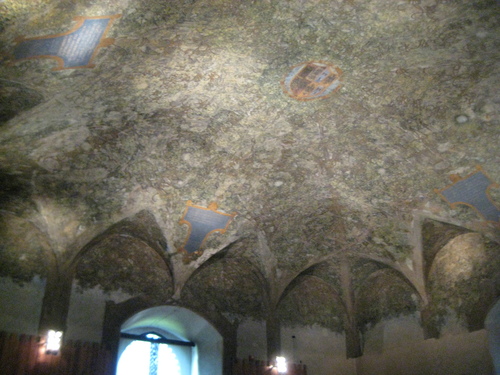One of the most interesting parts of studying abroad in Italy is the tremendous amount of history that you are surrounded with and close to. From ancient ruins of the Roman empire to the historic canals of Venice to iconic cathedrals like the Duomo, magnificent and breathtaking examples of human achievement engross you at every turn. Not lost among these storied artifacts of the past are the pieces of artwork made famous by the likes of Michelangelo, da Vinci, Raphael, and Donatello. As such, studying abroad in this unique nation actually makes art history fun, well mostly.
In order to fulfill my Penn State art requirements, I scheduled a class that discusses the life, achievements, and works of the brilliant Italian painter, engineer, poet, mathematician, architect, and astronomer Leonardo da Vinci. While I am by no means an art enthusiast and would probably never walk into a museum in the U.S. voluntarily, this class is actually interesting and enjoyable due to the amount of first hand learning that takes place. Within this class we will visit such sites as the “Last Supper” (conveniently located two blocks from IES in Milan) and pieces of Leonardo’s “Atlantic Codex” (which includes some of his famous journals and sketches). We also routinely discuss his other achievements in science, medicine, and mathematics so that the class is not simply endless discussions of artistic style and importance. Every student at some point has sat in a lecture hall and viewed slides of paintings located hundreds and usually thousands of miles from their classroom. While it is easy to see the beauty of certain paintings and sculptures, such as the “Mona Lisa” and “The David,” from afar, true appreciation for these pieces can’t be attained through PowerPoint.
Illustrating this point, our class discussions last week centered on discussing frescoes painted during the Renaissance. While this topic was not particularly exciting, the fact that we were able to walk one metro stop from our school and see a Leonardo da Vinci fresco, the “Sale delle Asse” located in the Castello Sforzeco in Milan, made the lecture material truly come to life (actually not a fresco, but you get the point). It is one thing to view a picture of artwork but to truly experience it, especially in the case of a fresco like da Vinci’s that engulfs the entire room in a web and maze of intertwined branches, knots, roots, and trees, you must see it in person. This experience just further exemplifies the amazing opportunities that exist when studying in Milan and Italy in general.
Oh and just for good measure, we also viewed Michelangelo’s last sculpture as it is located in the same museum.
Location: Castello Sforzeco, Milano, Italy


